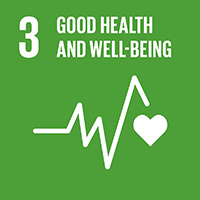Send to a friend
The details you provide on this page will not be used to send unsolicited email, and will not be sold to a 3rd party. See privacy policy.
In brief: In the Philippines, drugs are illegal and carry a penalty of up to life imprisonment. Strict regulation makes access to medical marijuana difficult and expensive. Although the World Health Organization (WHO) recognises marijuana’s benefits for treating certain medical conditions and their symptoms, the Philippine government has been reluctant to change its position. However, a SciDev.Net story published in 2019 ignited a debate that is helping those who suffer from diseases like epilepsy to access cannabis products to ease their symptoms.
Why it matters: An estimated 800,000 people in the Philippines suffer from epilepsy. Cannabidiol (CBD) is a compound extracted from cannabis, which has several health benefits, including helping to control seizures caused by two forms of epilepsy: Lennox-Gastaut syndrome and Dravet syndrome.
The big picture: In December 2020, the UN Commission on Narcotic Drugs reclassified cannabis and cannabis resin, recognising their medical value. The reclassification is intended to remove barriers to the research and development of cannabis-based medical products.
By the numbers: Only approved marijuana can be accessed legally and at a huge price – more than US$30,000 per year. As of 2021, the average annual family income in the Philippines was US$2,693.
Background
In the Philippines, drugs are illegal. Anyone carrying marijuana can be punished under the 2002 Comprehensive Dangerous Drugs Act. This includes a penalty of almost US$200,000 and up to life imprisonment. There are also proposals to reinstate the death penalty but only for drug-related offences. Thus, the law makes it very difficult for those suffering from conditions such as epilepsy to access marijuana for medical purposes.
The WHO recognises marijuana’s benefits for treating medical conditions and their symptoms. In 2020, the UN Commission on Narcotic Drugs voted to re-classify cannabis and cannabis resin under the WHO’s recommendation. Many countries, including nearby Thailand, have subsequently changed their laws around the use of medical marijuana.
The Philippines, however, continues to enforce very strict policies. Only approved marijuana can be accessed and at a huge price – around US$30,000 per year, according to those affected. As of 2015, the average annual family income in the Philippines was US$2,693.
Donnabel Cunanan is a proponent of medical marijuana and one of the founding members of the Philippine Cannabis Compassion Society (PCCS). Her daughter suffers from up to 1,000 epileptic seizures a day. The PCCS lobbies for the legalisation of medical marijuana in the Philippines and its work led to the filing of a bill in support of medical marijuana. While then president Rodrigo Duterte initially offered support for the bill, in March 2019 he retracted it.
What action did SciDev.Net take?
In the summer of 2019, SciDev.Net decided to investigate the issue of medical marijuana in the Philippines in greater depth. Regional coordinator Joel Adriano commissioned a story from journalist Melanie Sison.
Most experts in this field did not want to talk about the issue on record, given the strong political stance on drugs. The Duterte administration’s war on drugs was marred by extrajudicial killings, with an estimated death toll of between 6,000 and 20,000 during his six-year term (2016-22).
However, Cunanan was willing to talk to Sison. Cunanan was concerned that the Philippine administration’s new campaign against drugs would set back her years of work on legalising medical marijuana.
On 28 June 2019, SciDev.Net published a story entitled Where there’s smoke: medical marijuana and the Philippine war on drugs, detailing Cunanan’s campaign. SciDev.Net was the first news outlet to write about this sensitive subject in depth.
One of SciDev.Net’s core aims was to clarify the facts and science around marijuana for medical use. In 2019, the public still largely associated the use of marijuana for medical purposes as an excuse to legalise it for recreational use. A public discussion started.
Other news outlets, including CNN, picked up the SciDev.Net story and republished it on their websites. The SciDev.Net story received 6,995 unique page views and was one of our top five most-read news stories for 2019.
| Website reach (unique page views) | Social media reach |
| 6,995 | 1,818 |
What was the impact of SciDev.Net’s action?
Following the publication of the SciDev.Net story, officials from the Philippine government contacted Adriano to discuss the impact of access to marijuana for medical purposes. The Presidential office in Malacañang asked him to attend a meeting regarding the issue, which led to a discussion over the phone with the Assistant Secretary.
The debate around medical marijuana continued and, in February 2020, the Philippine Dangerous Drugs Board (DDB) approved the use of cannabidiol (CBD) for people with epilepsy. Duterte supported the board in its approval of CBD as a treatment for certain rare types of epilepsy.
Cunanan told SciDev.Net that the June 2019 article was a key reference used during a senate debate on medical marijuana and helped to influence the later 2020 decision on CBD. She said: “Of course, your article was a big help to our advocacy. Maraming salamat mula sa aming lahat (many thanks from all of us).”
Relevant SDGs:
 |


